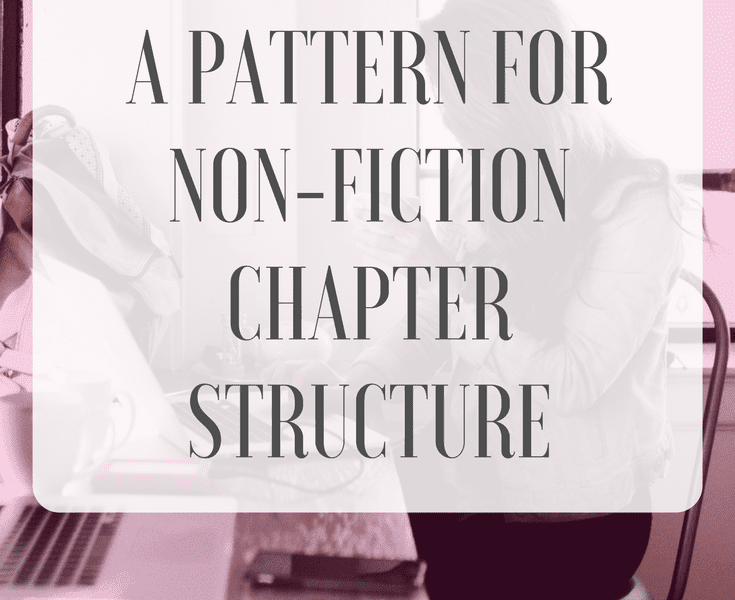Have you ever done a Rorschach test? It’s a psychological test that makes use of a person’s interpretation of inkblots so a psychologist can examine their personality and emotional functioning. Our brains are so desperate to make sense of everything that they will tell us that they see a picture in a spot of ink.
If you haven’t done a Rorschach test, then you’ve probably gazed at a cloud and seen a lion, a baked potato, or a car. And I know you’ve heard of someone somewhere who saw the image of the Virgin Mary or Jesus on a piece of burnt toast or a tater tot.
Our brains want to make sense of everything, even if it really is just a blob of ink, a cloud, or burn marks, and we also feel more comfortable with sense and patterns. Ask anyone with OCD if they are happier in a messy playroom or a neat, organized room, and I’m sure they will explain it to you!
This is why setting up a non-fiction book with a pattern for each chapter is a great method for planning and writing! When people know what to expect, then they fall into the pattern and feel very connected with your book. It feels familiar to them by the second chapter.
Shevelle McPherson’s SOAR: Beyond the Heels of Adversity is a spectacular example of setting up a pattern in each chapter. Here is the pattern she uses:
- Each chapter title is a character trait that must be ignited and developed to overcome the incident in that chapter
- The page with the chapter title features a couple sentences about what the chapter talks about. She does a great job of enticing the reader to keep reading.
- The first part of the chapter is a short story about something that happened in her life and how she overcame it.
- This is followed by the “Ignite Your Power” section, which talks about situations that are similar where you would need the character trait she talks about in that chapter to keep going after the incident.
Not only is this great for potential readers; it’s also great for writers. Why? Because it gives you something to follow when you are writing your chapters. And, you don’t have to figure out what you’re doing for each chapter. It’s the same pattern each time. It’s brilliant!
Another good example is from Melanie Colusci’s From Start-Up to Success: Navigating the Journey to Becoming (and Staying) a Successful Entrepreneur. Her book is for someone who is starting a business, so the order is somewhat chronological, beginning with some of the things you would do initially and then moving on to things you would need to know as your business progresses.
This is how she set her chapters up:
- The chapter title is a concept she plans to discuss in the chapter.
- The body of the chapter discusses the concept and how a business owner would be able to successfully use it for their business.
- The body is always followed by Key Chapter Takeaways, which is a bulleted list of what the reader learned in that chapter so they have a quick reference.
- Each chapter ends with Resources. These are key books or software suggestions that the reader may want to invest in for a more in-depth look at the concept or to assist with the concept (like billing software).
This predictable format makes Melanie’s book a fabulous reference. She also includes all the lists of Key Chapter Takeaways and Resources at the end of the book for easy access.
You can use any number of patterns to build familiarity in your book and ease your writing process, but the key is to pick the one that makes most sense for you and your readers. When you’re planning your book, consider what chapter topics you want to discuss. Then look at what you will talk about under each topic and see if anything can be put under the same category. When you spot the pattern, use it! Break up the chapters with matching subheadings to guide your readers. And if you don’t see that pattern for each chapter, mess with the topics or the discussion until you do see a pattern.
Remember that the goal is always to connect with your readers and keep them engaged. Engaged, happy readers write great reviews and encourage others to buy your book.
Now here’s a bonus tip: if you plan on doing talks about your book, you can use the patterned headings to help you organize your notes and keep you on track!

